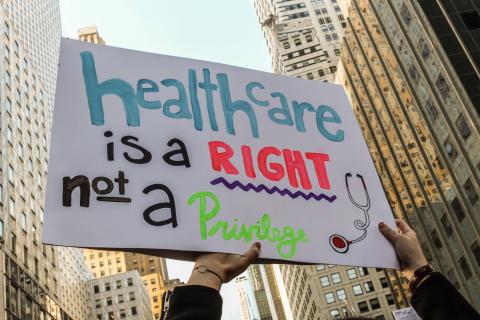
The States Parties to the present Covenant recognize the right of everyone to the enjoyment of the highest attainable standard of physical and mental health.
Article 12 of the International Covenant on Economic, Social, and Cultural Rights
What is the Right to Health?
Everyone has the right to health. It relates to both the right of individuals to obtain a certain standard of health and health care, and the State obligation to ensure a certain standard of public health with the community generally.
The World Health Organization defines the right to health as “a complete state of physical, mental and social well-being, and not merely the absence of disease or infirmity.” States should ensure both freedoms and entitlements. The former include the right to control one’s health and body, including sexual and reproductive freedom, and the freedom from interference such as torture, non-consensual medical treatment and experimentation. Entitlements include access to adequate health care facilities and services, as well as appropriate State measures in relation to the socio-economic determinants of health, such as food, water and sanitation, safe and health working conditions, housing, and poverty.
The right to health is closely interconnected with numerous other human rights, including the rights to food, water, housing, work, education, life, non-discrimination, privacy, access to information, the prohibition against torture, among others.
In its General Comment 14, the UN Committee on Economic, Social, and Cultural Rights (CESCR) provided detailed guidance to States regarding their obligations to respect, protect and fulfil the right to health. The Committee also noted that the right includes the following interrelated and essential features:
- Availability. States should ensure the provision of enough functioning public health and individual health care facilities throughout their territory, as well as safe water and sanitation facilities, trained and fairly-paid medical professionals, and essential medicines.
- Accessibility. Access to health involves four key elements: non-discrimination, physical accessibility, economic accessibility, and information accessibility. Health facilities and services should be accessible to everyone, especially the most vulnerable, without discrimination on any prohibited ground. The facilities and services, as well as underlying determinants of health such as water and sanitation amenities, must be within safe physical reach. Health care facilities, goods and services must be affordable for all, with any payment based on the principle of equity so that poorer households are not disproportionately burdened with health-related expenses. States must ensure that every person has the right to seek, receive and impart information on health, in balance with the confidentiality of medical information.
- Acceptability. Health facilities should be respectful of medical ethics and the culture of individuals and communities, as well as attentive to gender and life-cycle requirements.
- Quality. Health facilities should be scientifically and medically appropriate and of good quality. Among other things, this requires the provision of necessary medicines and equipment, skilled medical professionals, and adequate water and sanitation.
Photo credit: Montse Belver
